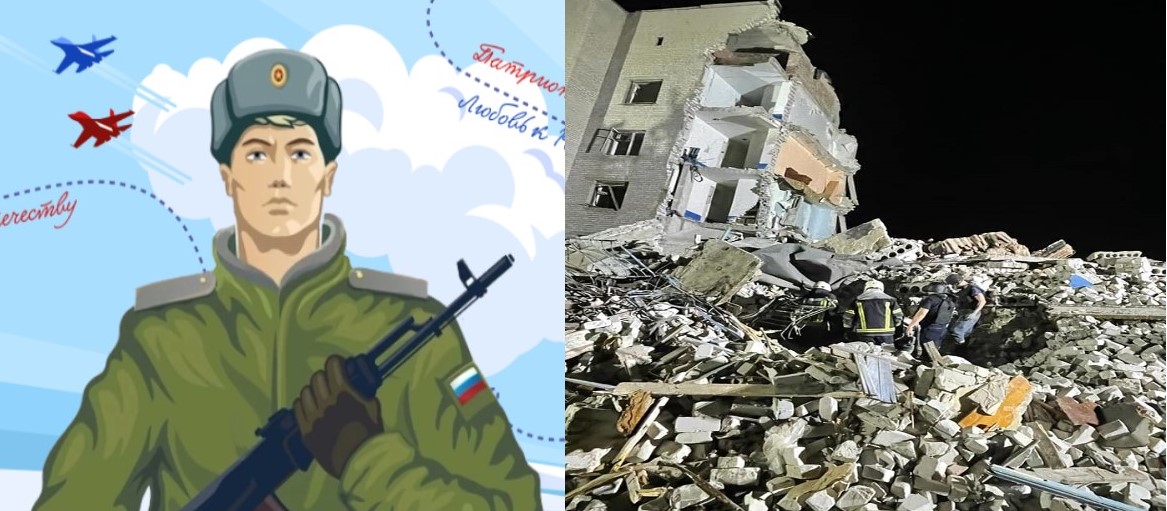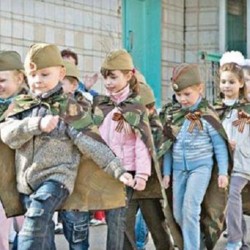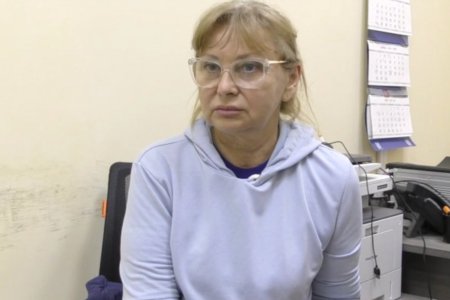
Russia’s new budget for 2024 and spending plans up till the end of 2026 are all about its war against Ukraine, with this seen not only in the massive increase in money allocated for direct military purposes. Some of the spending is to be allocated on occupied parts of Ukraine, but not on rebuilding what Russia destroyed, but on indoctrination, and propaganda, especially among children and teenagers. These increases are in stark contrast to the reduction in spending on Russia’s healthcare system, despite the dire state of a huge number of hospitals.
Radio Svoboda has presented a visual breakdown of the main budget items and casts in doubt certain claims, in particular that by Russian president Vladimir Putin that this is a ‘social budget’. While ‘social payments’ do make up 21% of all planned spending, any increase is also directed at costs linked with the war, including war pensions, providing treatment, artificial limbs, etc. for the war wounded. This includes those from those occupied parts of Donetsk, Luhansk, Kherson and Zaporizhzhia oblasts. There is also a substantial increase, listed under ‘social spending’, in money spent on nuclear weapons specialists.
Russia is claiming that the illegal annexed parts of Ukraine are ‘new territory’, with this suggesting that the amounts set aside for ‘the support of citizens who have lost homes and vital property’ should, in principle, help those whose homes Russia destroyed through its bombing and shelling of Ukrainian civilian targets. While the amounts allocated are increasing, by just over 20 billion roubles (where 1 euro = around 100 euros, thus 202 million euro) and by an envisaged 42 billion roubles each in 2025 and 2026, they would almost certainly be far less than the real figures required. In fact, Russia has already admitted that it will not be rebuilding some of the Ukrainian cities it destroyed such as Popasna, in Luhansk oblast. In those that were not razed to the ground, like Sievierodonetsk and Lysychansk, there appear to be virtually no efforts underway to even ensure that people living in badly damaged apartment blockings have heating or at least running water. It is also clear from Mariupol that a huge number of residents are forced to remain in dangerously compromised apartment blocks. Of those who saw the occupation regime demolish their blocks, many, especially in the centre, have discovered that what is built where their homes stood is not tor them, but for those, normally in Russia, who can afford the ‘selling price’ and mortgages offered.
There is a slight increase in the spending planned on healthcare, but this also is linked with military medical needs. In fact, spending on healthcare is being reduced. In 2024, spending is to fall by over 8 billion roubles on regional projects to modernize clinics and first medical contact units (in Russian фельдшерско-акушерский пункт, these provide extremely limited medical care in rural areas). A further reduction of almost 12 billion is planned for 2025, while no spending on such modernization is planned at all in 2026. It should be stressed that this is by no means because such modernization is not needed. In 2021, Russia’s federal statistics administration were cited by Important Stories as reporting that almost 25% of hospitals, and 20% of ambulatory healthcare establishments were in need of major repairs. Over 1500 hospitals were functioning without hot water, as well as five thousand ambulatory medical establishments.
Worth noting also that Russia has destroyed or badly damaged a huge number of Ukrainian hospitals and other medical establishments, including on that territory it is now claiming to have annexed. These need considerably more than modernization.
The main official cause of death in the Russian Federation, namely cardiovascular disease, does not fare well from this budget, with 13% less allocated than previously planned, and further decreases anticipated (5.5% in 2025, and almost 8% in 2026).
The Radio Svoboda report also notes that the 82 billion rouble increase for ‘education’ than that planned a year earlier should also be viewed with caution. 50 billion roubles, for example, is to be spent on indoctrination of young Ukrainians in occupied parts of the Donetsk, Luhansk, Kherson and Zaporizhzhia oblasts. A Forbes.ru report from early October spoke of a 10-fold increase in the amount of money envisaged for so-called ‘patriotic education’ over that planned for in the 2022 budget (passed while Russia was still denying plans for its full-scale invasion of Ukraine).
A further five billion roubles is to be allocated to the so-called ‘Institute for the development of the Internet’ which publishes “state content, aimed at strengthening civic identity and spiritual-moral values”.
A slightly earlier report by Verstka media reported a four-fold increase in spending on ‘patriotic education’ since Russia began its full-scale invasion of Ukraine, but also noted that the figure was more than ten times higher than the 3.5 billion roubles envisaged in the final year before February 2022,
40 percent on the military and ‘law enforcement bodies’
The figure envisaged of almost 11 trillion roubles is 2.5 times the figure planned just a year ago. It is likely that the real figure is larger still, as Moscow is continuing to call its war of aggression against Ukraine a ‘special military operation’, and is doubtless concealing many items of military or enforcement spending under other titles. The increase is, in the first instance, due to a massive hike in the “material stimulation for employees of military recruitment offices” with this set to rise by almost five billion roubles next year.
Law enforcement bodies fall under the section on so-called ‘national security’, with the expenditure next year set at well over three trillion roubles. This is over 9% of all state spending in the Russian Federation and occupied parts of Ukraine.
The report notes that, even if we add education and health to social security expenditure, this still only comes to 29% of Russian state spending. This is significantly less than the 40% allocated for Russia’s aggression against Ukraine and enforcement agencies which are increasingly used to crush protest, for political persecution and to otherwise prop up the current Russian regime and in no way enhance national security.



